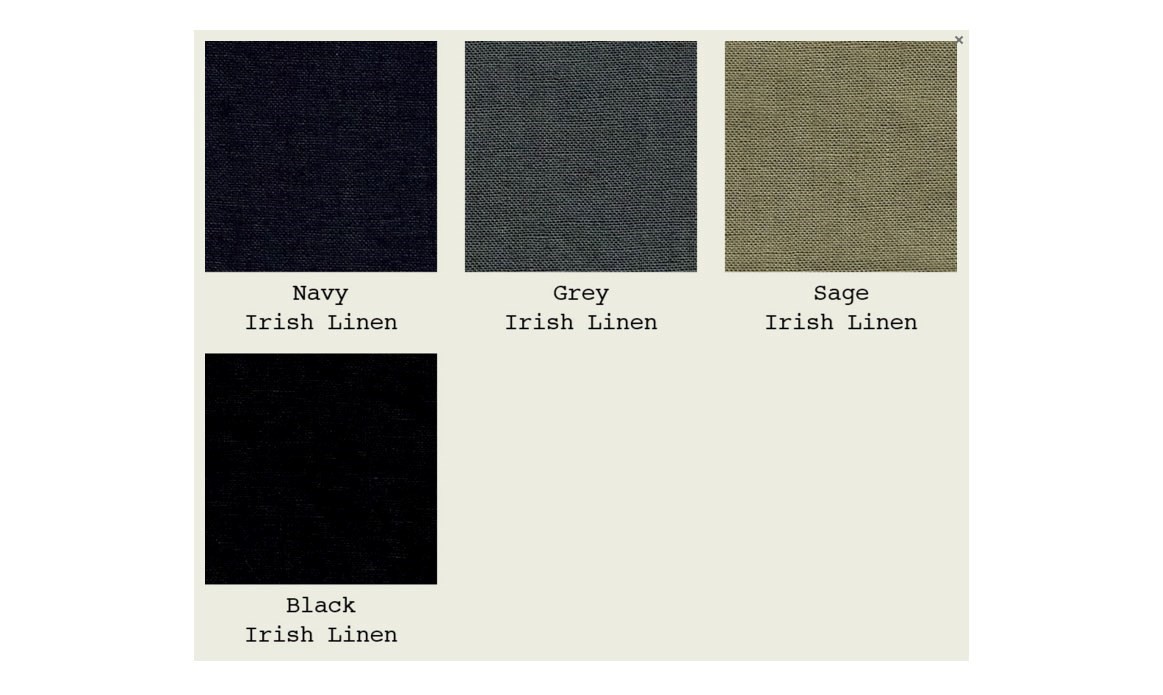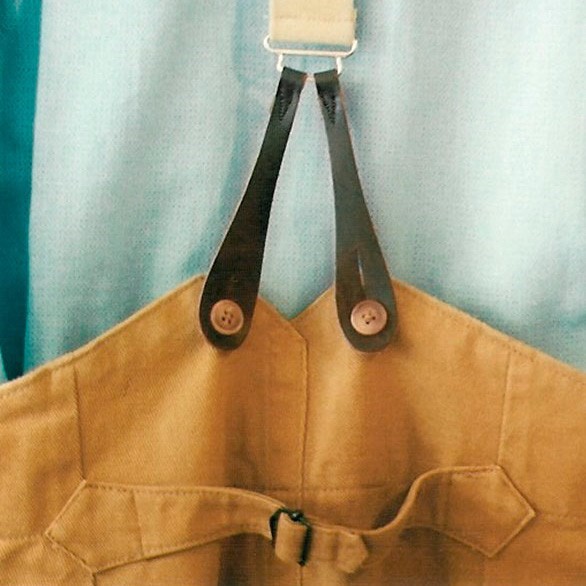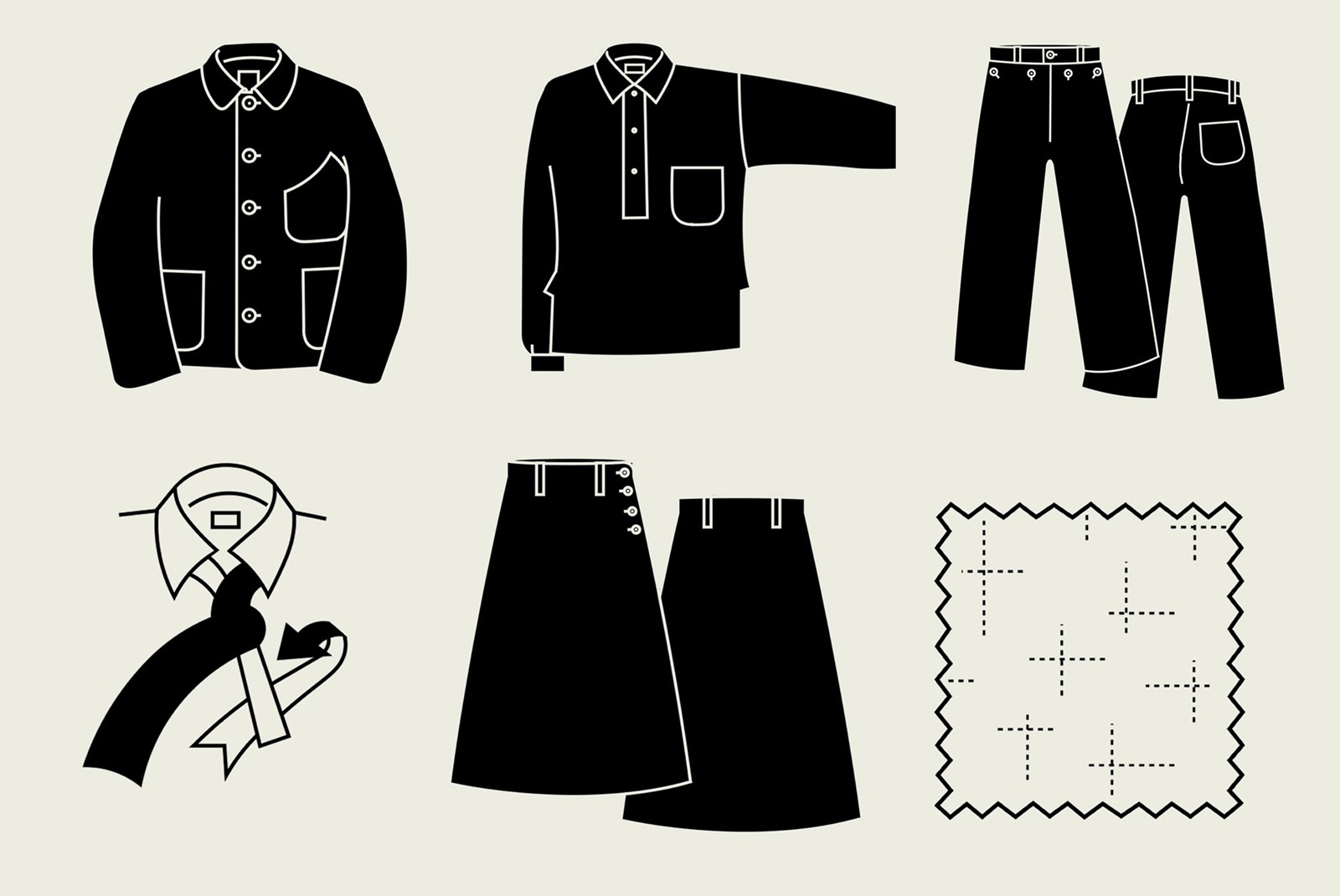For the first date I had with my boyfriend two years ago, he wore a beautiful work jacket in dark navy wool. He’d stolen it from his mother (a woman of exceptional taste who knows the virtue of an oversized garment), who in turn had bought it from Old Town 15 years previously. It’s still in good nick. A few months after we met, we visited their shop in north Norfolk, resplendent with scrubbed floorboards, painted wooden walls, enamel lamps, a new Formica counter and their modern versions of 20th century workwear displayed on the walls. We were served by the exacting and wise Miss Willey ( “a former Saturday girl at Woolworth’s”), one half of the business, who, one feels, would refuse to sell you clothes if she were not satisfied with their fit. What may at first be mistaken for an abruptness in her manner is soon revealed as a clear-eyed determination that you leave the shop having ordered the correct garment in the correct size. She convinced me to buy trousers in a size larger than I would ordinarily so that they would cast a better shape: they did. When I got in contact with Miss Willey eight months later (who, it later emerged, used to work for notorious PR Lynne Franks, about whom Absolutely Fabulous was written) about this story, she remembered what perfume I was wearing on the day of that first visit.

It is not actually possible to buy clothes from the Old Town shop – the only pieces available for immedate purchase are accessories and jewellery made by Royal College graduate Jane Sedgwick. It’s actually a showroom stocked with samples in all sizes and, after choosing the cloth you want, you can place an order. Six weeks later it will arrive wrapped in a box printed with their blue signage. In theory, it is possible to order over the phone having chosen a piece from the website – that is, if you have your correct measurements and don't want trousers (they are unwilling to sell trousers if you have not tried them on). A stern message on the website addresses wishful thinking when it comes to estimating one’s girth: “Some manufacturers tend to flatter the customer with misleading sizes. Some ladies will just hope that a size eight will work against all the evidence and many men will believe they have a moderate waist size achieved only by wearing trousers beneath the belly.” That’s you told.
Skilled machinists who work from home make your garment (again, women who used to work in specialist factories) to detailed instructions from Mr Brown, who designs the clothes and is the other half of the business. It was while studying at art school in the late 1970s that he decided to make clothes: “it was the do-it-yourself sort of punk era, it just seemed perfectly doable, though they were pretty primitive,” he remembered. After designing for cult 1980s store Demob on Beak Street, making a few clothes for Japan and a period running a successful homeware brand in Norwich, he founded Old Town with Miss Willey.

Now, Mr Brown is meticulous about seams, buttonholes, stitching and every other detail. “Our way of making is quite unusual, there’s no overlocking. It’s all made on a straight stitch machine; it’s quite simple but it’s very particular too,” he says. That is why his clothes last so long and why, despite the fact that Old Town can count few locals as customers, they have been in business for 25 years. Londoners make special trips, and a few times a year, Miss Willey and Mr Brown travel down and host a trunk showroom in a house near Spitalfields market. But Old Town is not expensive: prices fall well below those at Margaret Howell, who might be considered a stylistic peer. Shirts are from £80, my trousers were £110 and their knitted jumpers, made by an old family run firm in Leicestershire, are £150. The machinists, several who have been with them for over a decade and (one of whom is now a grandmother, “Granny Audrey”, aged 72), make around 70 garments per week and use British cottons, wool and linens where possible.
The branding and signage in the Old Town showroom is so consistent, so streamlined and perfectly suited to their products and ethos, that you’d think they had paid an agency and were planning to ‘roll out’ stores. What’s more, it’s not that Old Town wouldn’t like to expand, in theory: “Oh God, we’d love to be in every town up and down the country,” commented Miss Willey, “but only if it was well produced.” Indeed, in the past they sought out good quality British factories to work with, though none met their standards. “If it could be made identically, we would be fine with it,” added Mr Brown. However, Mr Brown and Miss Willey are not interested in becoming less fussy about detail; they are not interested in using cheaper fabrics or having clothes made in places where they cannot check the quality, and therefore, they will not expand. As Mr Brown succinctly stated: “What would be the point?”
